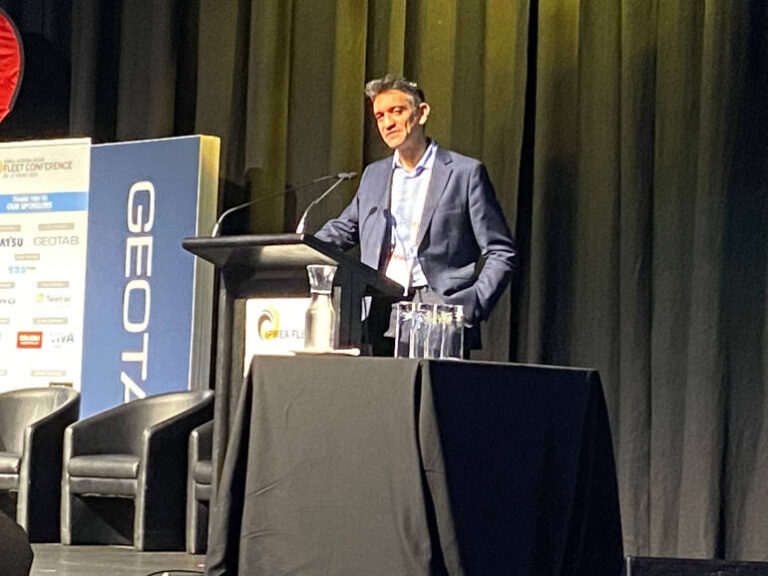Jitesh Singh, winner of the 2023 Fleet Manager of the Year Award by AfMA, the Australasian Fleet Management Association, talked at this year’s IPWEA Fleet Conference about the incredible transformation to electrify trucks and cars for Waste Management NZ, now known simply as WM in New Zealand.
“We’ve collected waste, we’ve turned it into a renewable source … we imagined if we could put that back into our trucks to complete that circular economy,” said Singh, WM’s head of fleet, talking about what motivated the organisation to go electric. “We were quite fixated on the circular economy of our business.”
WM produces about 27 megawatts of electricity from converting methane at three major waste sites. More, it has 70 locations around New Zealand. Its fleet comprises 900 trucks with more than 50 converted to electric power trains. Of its 200 cars, half are electric vehicles.
“The strategy is when we replace the vehicle, the first thing to look at is whether it’s suitable for electric or not,” said Singh.
Singh noted top management instigated the transformation, saying he was called into the boss’s office one day and told: “I believe in electrification. I want you to go and I want you to do something. I want you to find a solution.”
Singh is a mechanical engineer and was involved in vehicle design before joining WM 11 years ago.
Remarkably, the first of WM’s trucks to be converted were done in The Netherlands in 2018. “They had what seemed like a proven record of a lot of trial vehicles running around in Europe,” said Singh.
The battery packs were crash tested and retrofittable to WM’s lorries. And, being able to keep the same vehicles in the fleet meant WM could also keep its existing supplier network.
Today the conversions are done in NZ, including about 20 trucks in 2023. More than 1.6 million kilometres have been travelled in them.
“It’s a good start. Lots of learnings.”
One thing that really helped make the transformation to electric a success for WM was being able to use AC charging, compared with more expensive establishment of a DC charging depot, said Singh.
“AC charging is just cheap,” said Singh, adding, “It is significantly cheaper than a DC for our application where trucks come back to site. AC charging worked perfectly for us.”
The stop-start activity of a waste truck is an ideal use case for electric versus diesel. As WM says on a post on its website: “Each time the truck stops, the deceleration creates regenerative energy that recharges on-board batteries. This is in stark contrast to conventional fossil fuel powered vehicles where the energy is lost through braking into the atmosphere as heat.”
The electric-powered waste trucks are much quieter than their diesel counterparts, suggesting potential for WM to start operating hours earlier than current regulations.
Another advantage is less wear on consumables.
“The other thing that I’ve seen is tyre and brake wear seems to be way less than a diesel truck. And most of that is basically to do with the regeneration function, not using the brakes as much.”






